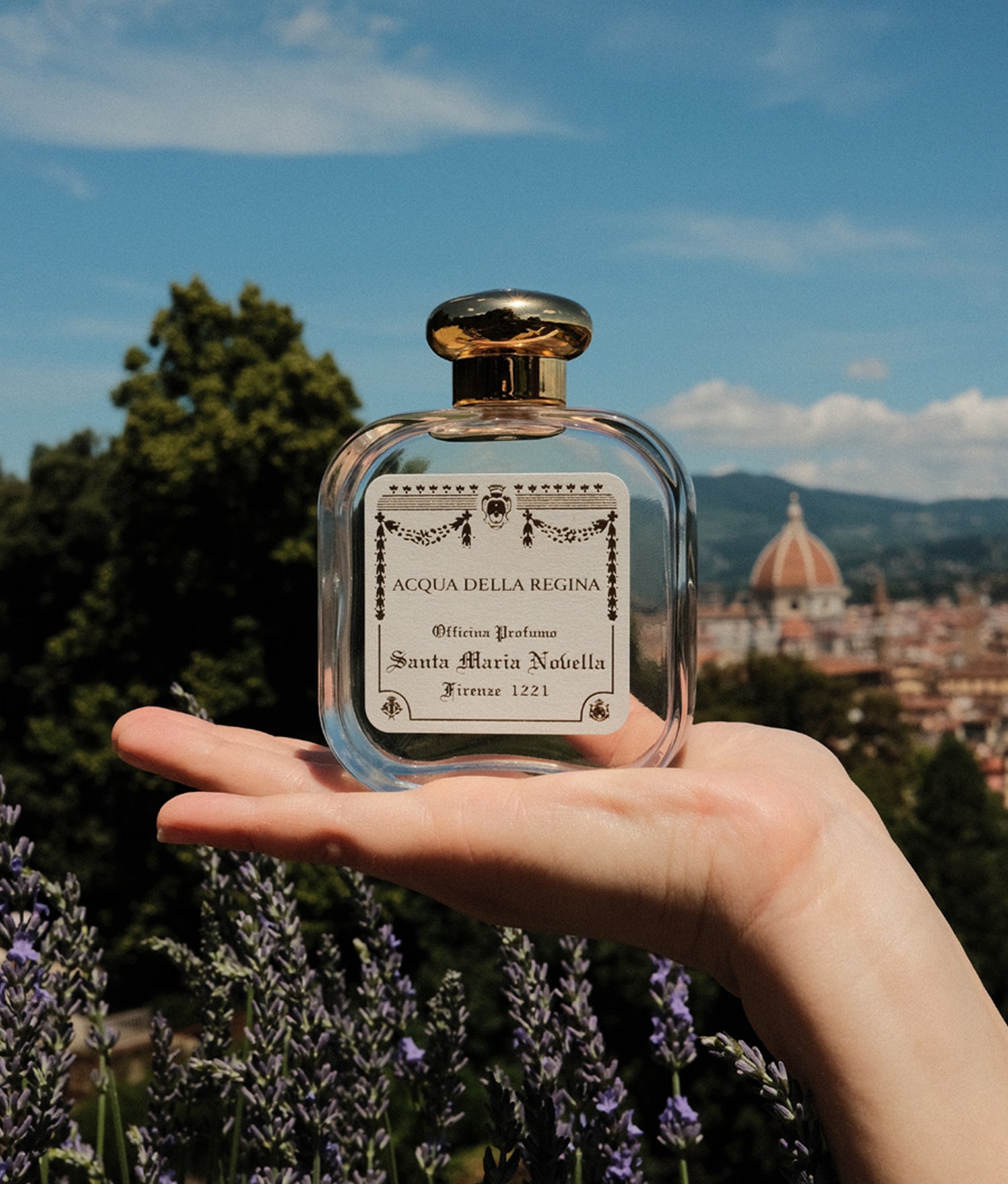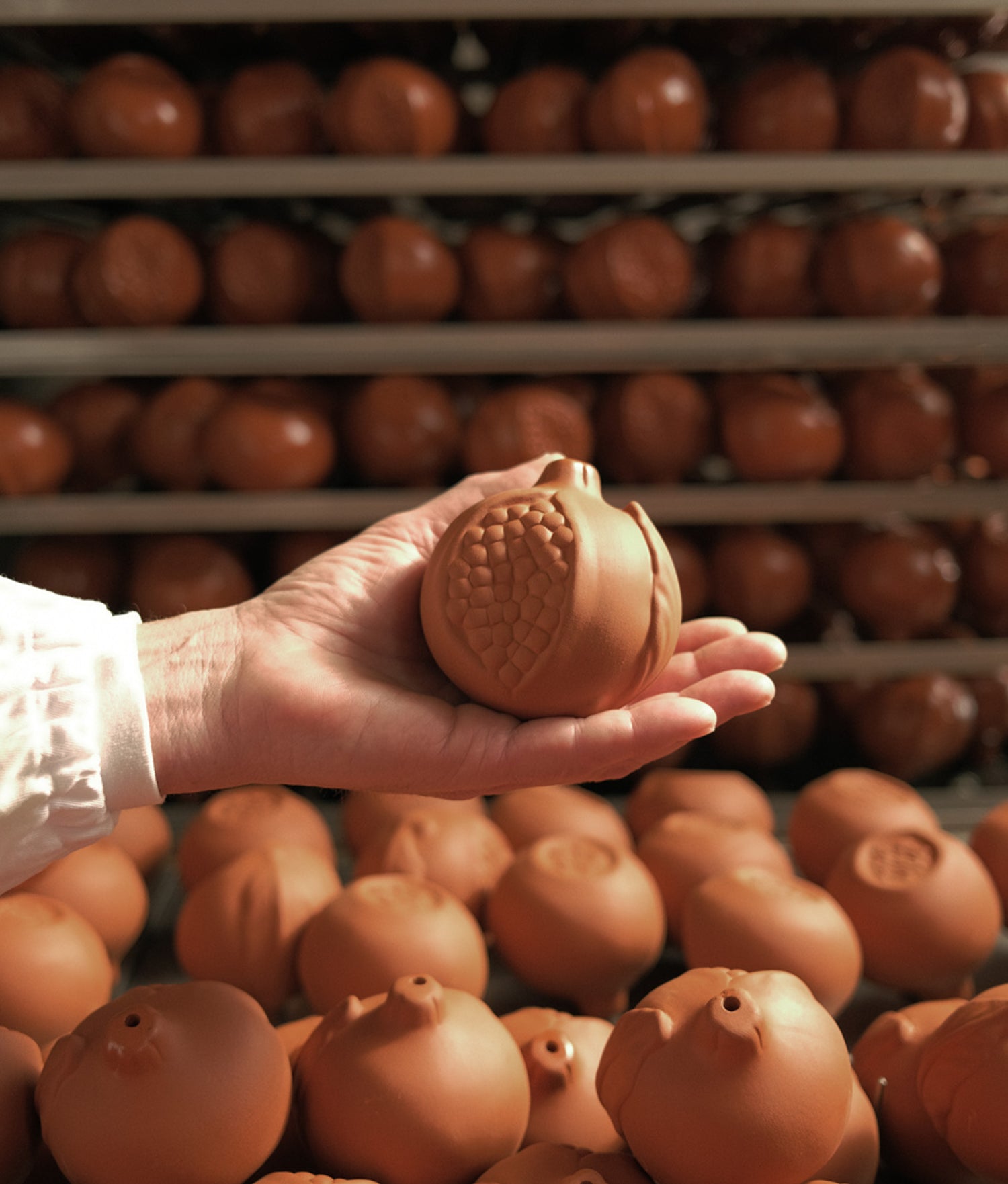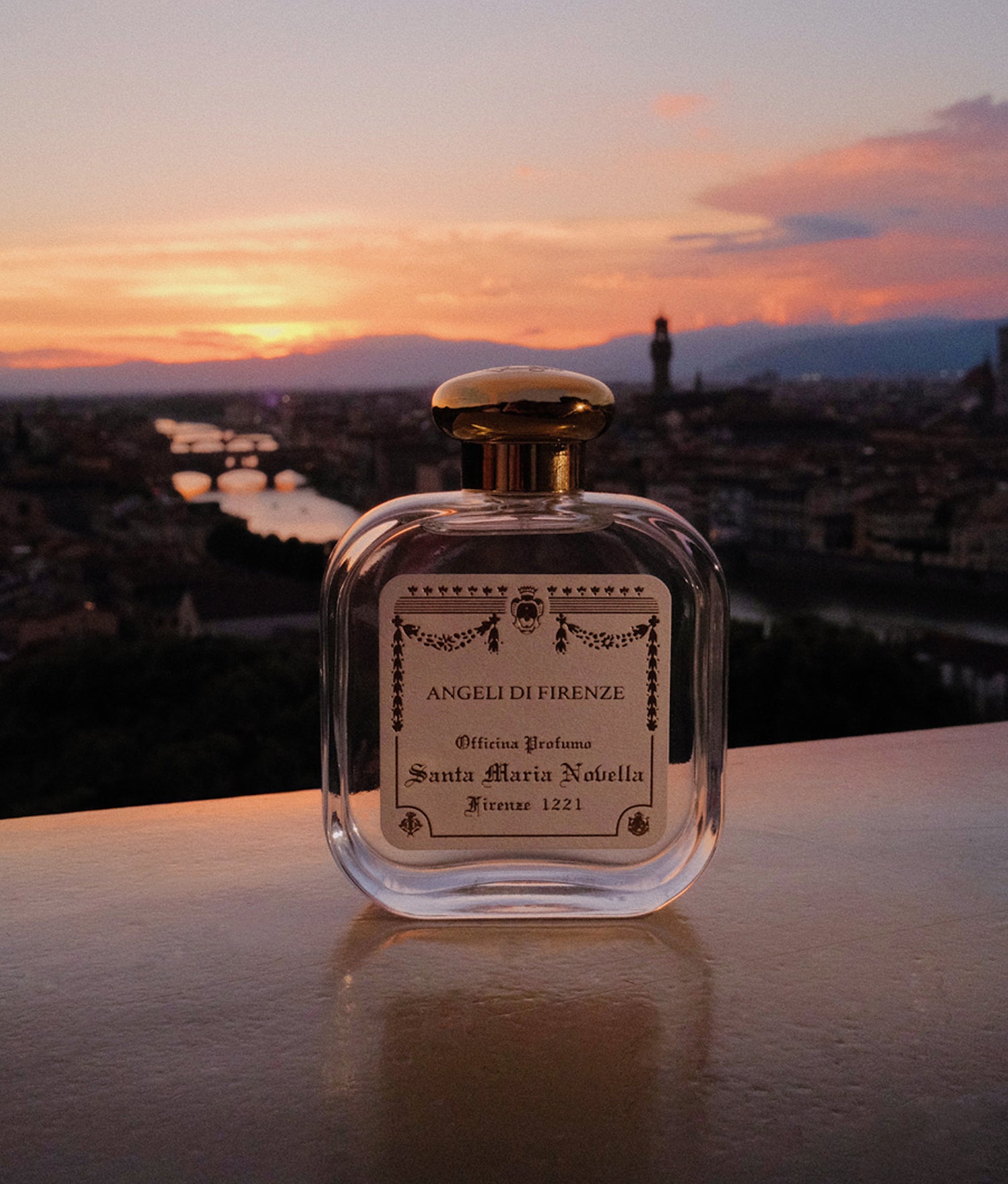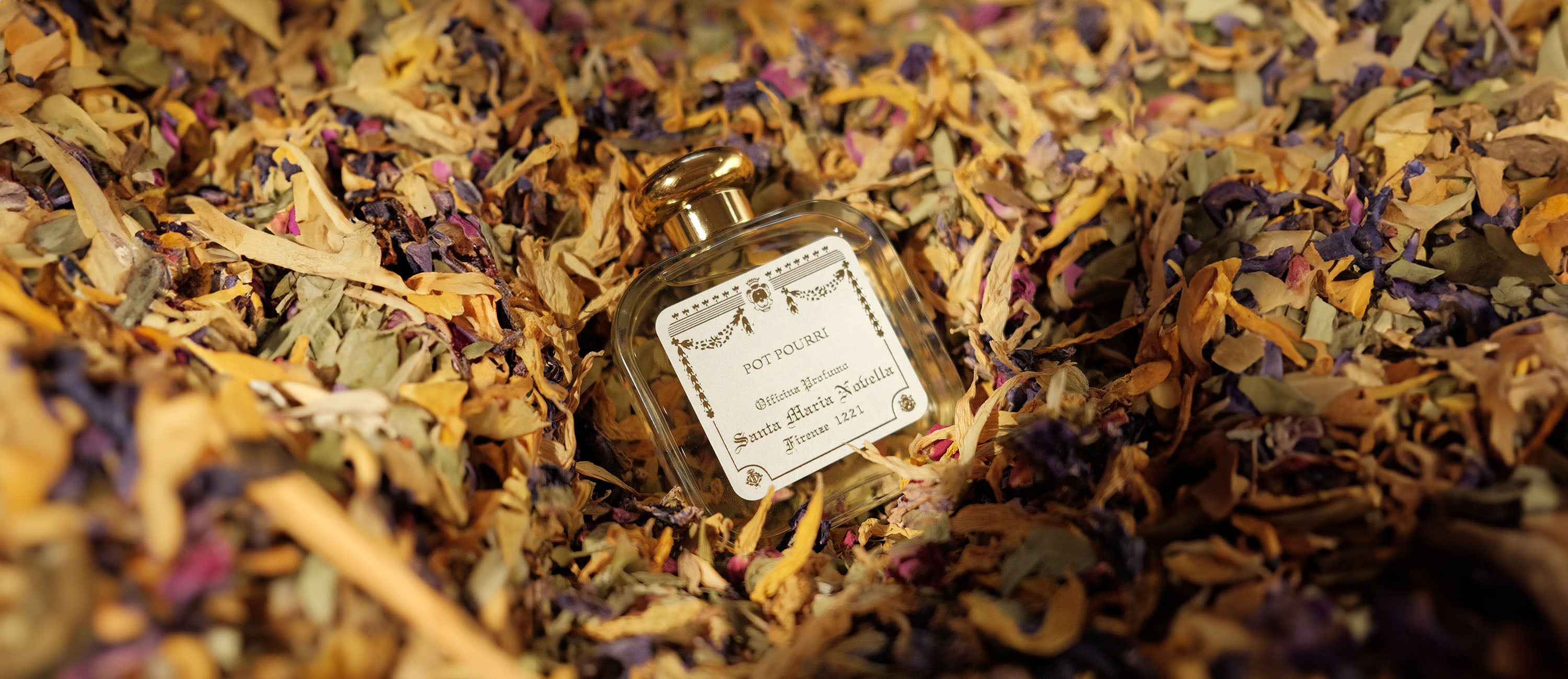800 years of Heritage
Florence is a living city, constantly in motion and filled with sounds. These sensations suddenly change upon entering the historic boutique of Officina Profumo-Farmaceutica di Santa Maria Novella, located at 16 Via della Scala. External noises soften, and the air becomes permeated with a thousand scents. Here,time begins to flow backwards, up to the year 1221. It takes us behind the scenes of a unique production process, that shows us the art of craftsmanship and the Italian beauty in the world.

Acqua della Regina
Our oldest fragrance. Catherine de' Medici's wedding gift to her future husband, Henry II of Valois. Acqua della Regina is a citrusy and elegant tale that enchanted the court of France, and which was created in 1533 by Renato Bianco, a Florentine perfumer who, it is said, was initiated into this art by the friars of Santa Maria Novella.

Melograno in Terracotta
Iconic. Our Melograno in Terracotta is the symbol of our craftsmanship. Emblem of abundance and rebirth, it is a unique preparation inspired by the beauty of nature, and which reminds us of the value of time and know-how.

Angeli di Firenze
Two unique stories, that of Florence and that of Officina Profumo-Farmaceutica di Santa Maria Novella. Tied together by one of our most beloved Eau de Colognes. Angeli di Firenze is a luminous fragrance, which celebrates all those people who, after the 1966 flood, contributed to saving the cultural heart and history of the city. A joyful ode of marine and fruity notes.

